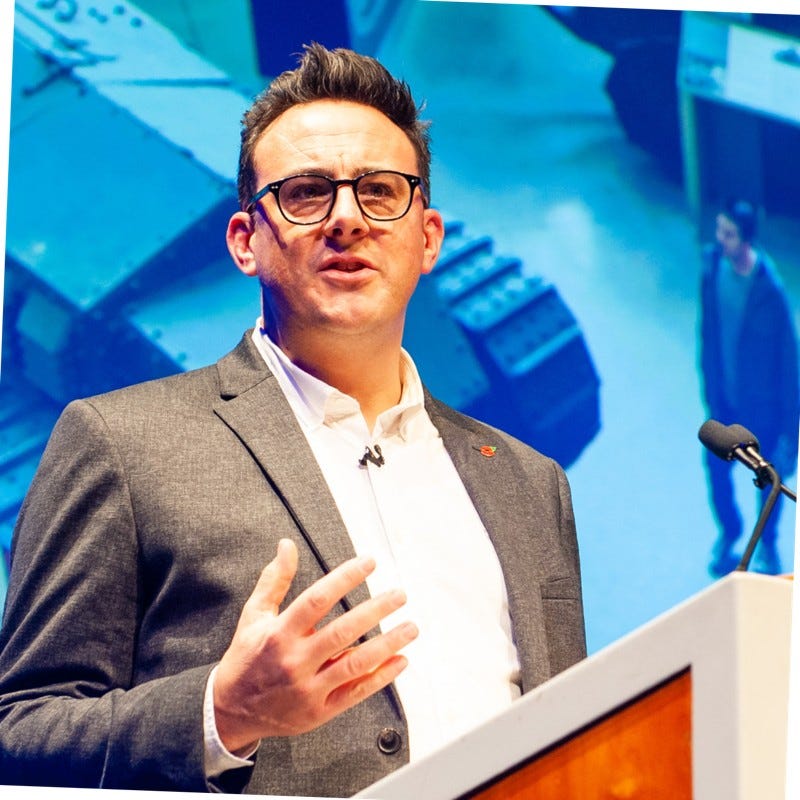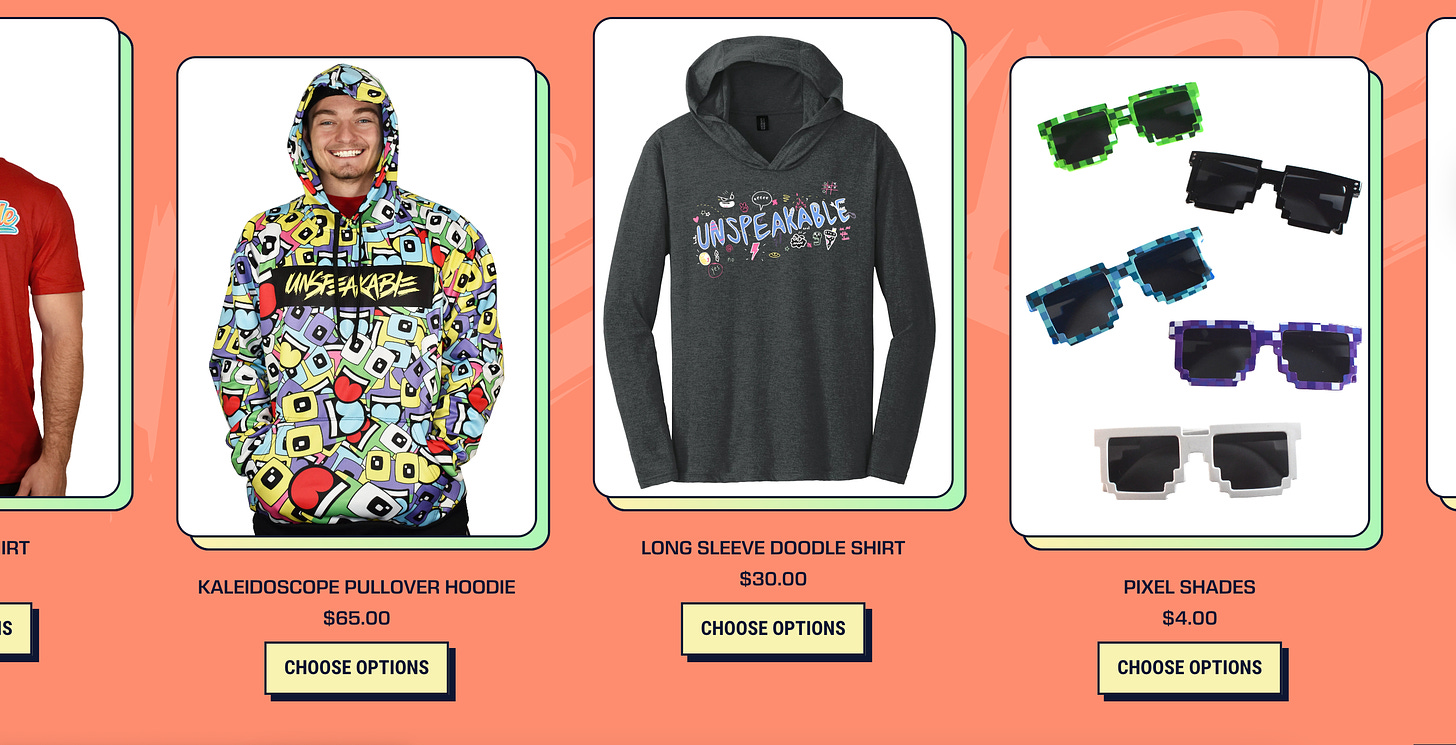Cultural Content with Nik Wyness
Tank Museum's Head of Marketing Engagement talks about the opportunities the Creator Economy offers Museums
Over the last couple of years the Tank Museum in Bovington has hit headlines for its meteoric success as an online content creator.
This year the Museum hit half a million YouTube subscribers (that’s more than the Met). Not only that, but it’s managed to build a global community of enthusiastic tank fans who are willing to pay for the Museum’s content.
Here Nik Wyness – Head of Marketing and Engagement at the Tank Museum – gives his perspective on the opportunities the digital creator economy offers museums…
Creator Economy offers Museums Big Opportunities
The Tank Museum experience offers a proven strategy which delivers an increase in charitable benefit, reach, the creation of a loyal community and a significant increase in revenue.
Museums house the best stories in history – so why are so many reluctant to share them online?
The Tank Museum experience shows that there is much to be gained for institutions wholeheartedly extending their scope online.
We’ve just hit 500,000 subscribers and 100 million views on our YouTube channel, reaching a global audience with our mission to “tell the story of the tank and the people that served in them”.
We’re more complete in the fulfilment of our charitable objects as a result, but we’re also more effective than ever at raising funds from those beneficiaries.
In 2022, The Tank Museum generated over 25% of its total turnover online from non-visitors. We did this by adopting identical strategies that have allowed entrepreneurial YouTubers to make a comfortable living from content creation.
We’ve been pioneering a content strategy that values distinct online programming, distributed on free online platforms, to build an audience that has grown into an engaged community of “fans”.
We’re now realising the value of this investment.
YouTube & The Creator Economy
My 8-year-old watches hours of videos staring Nathan Johnson Graham – aka “Unspeakable”.
He watches this American YouTuber - who has amassed 14 million subscribers - playing Minecraft or engaging in silly stunts.
Not my cup of tea, but I’m not the target audience. On the other hand, he loves it.
He is now the proud owner of an Unspeakable hoody and baseball cap, purchased from Unspeakable’s online store.
He’s a fan. And this is a great example of how the Creator Economy works.
The Creator Economy is the term that classifies the commercial activity that has grown up around the content creation industry.
Nathan made over $28 million in 2021. He’ll have made this through a combination of advertising revenue, sponsorships, endorsement deals, licensing and merchandise sales.
You’ve probably never heard of him, but he is one of many independent content creators, earning their living from the content they produce and the niche audiences they have developed.
Such creators offer modern audiences’ greater relevance, accessibility, relatability and authenticity than their mass media counterparts – and in exchange audiences are willing to invest to support the output of the creators and the values they embody.
At the other end of the Social Value scale, the Guardian Online remains free to access thanks to the support of 1.5m supporters in 180 countries who wish to support its independent journalistic values.
This shows that engaged online communities will financially support the creators who offer purpose and value in their output – even if they can get it for free.
It is by learning from the emerging Creator Economy that The Tank Museum has been able to benefit financially from its own niche online community.
Making Quality Content
To grow a community, creators must invest in the creation and distribution of quality content that serves a niche enough to earn their affection, their loyalty and trust.
Unsurprisingly, our online community is composed of those with an interest in the history of armoured warfare.
This is a very niche interest, but the internet is a big ocean and there are plenty of fish.
My three key rules for defining quality content are:
Usefulness: It must satisfy a need among the audience. You must give them something they want and value. We offer stories that inspire, and facts that add to their knowledge in a style that works for them.
Authority: As a museum we must be a thought leader in our specific subject area – and the accuracy of what we are saying is essential. But to be authoritative on online you must be respected and interesting at the same time.
Consistency: Being consistent with your audiences’ expectations, consistent with your topic, and delivering on a consistent basis.
Creating for your niche means specifically not creating content to appeal to other audiences.
This also means creating what they actually like and not what your stakeholders think they ought to like…
Building Niche Communities
The Museum industry has a noble obsession with trying to reach audiences other than the ones they already have.
But overlooking your base is the single reason why I think most Museums are failing to build a coherent and loyal community online.
The lesson here is that if you are successfully reaching your niche, your online audience will not be entirely representative of your visitor base. And because of the way algorithms work, this is something we must get comfortable working with.
The Tank Museum’s YouTube audience is very different to our museum visitor profile.
It’s 98% male, compared with around 55% of visitors. 60% are under 44 – much younger than our average museum visitor.
30% of our viewers are from the USA with just 21% based in the UK. Museum visitors are 90% UK, with less than 2% being from the USA.
Whilst these hard-core tank enthusiasts make up 99.9% of our online audience, they are only about 20% of our actual visitors in any given year.
There are only so many people that will visit us in Dorset, but there are tank enthusiasts all over the world…
Messaging to Monetisation
Our online content and messaging is underpinned by our mission and values: positioning ourselves as the charity that communicates, preserves, and conserves this specific history for future generations.
So we’ve been developing a group of people who have an emotional attachment with The Tank Museum because our mission is one they wish to watch succeed.
They’re basically fans.
Through them, we’re now raising significant funds through:
Advertising revenue: The more viewers you have the more you earn on YouTube.
Online memberships, tips & micro donations: By asking for viewer support on platforms such as Patreon and YouTube Memberships.
Brand sponsorships: Working with corporate sponsors who wish to reach our niche audience.
E-commerce: Our e-commerce has increased from £120k in 2019 to £1.4M in 2022 – and it’s still growing, with subject specific books, models, and brand merch being our biggest sellers.
As a registered charity, the importance of this new revenue stream is impossible to overstate.
It’s a modern form of fundraising. It’s not philanthropic and it’s not transactional… it’s somewhere in between.
The resulting relationship between The Tank Museum and our online community is very different to any other group of stakeholders – having more in common with the supporters of a football club than those of a traditional museum or gallery.
They are geographically diverse, tend to be younger and more male, they are unlikely to be among the social elites nor to consider themselves “patrons of the arts”. There are many of them, and they don’t have to visit the ground to support the team.
Yet their contribution is now significant to the sustainability of The Tank Museum – and it’s only going to increase.
Conclusion…
The Tank Museum experience in the Creator Economy offers a proven strategy which delivers an increase in charitable benefit, increased reach, the creation of a loyal community and a significant increase in revenue.
This is why I believe that the museum sector is uniquely placed to take advantage of the Creator Economy – satisfying a real demand from online audiences for rich, authoritative, content.
And as the Museums sector is full of content-rich, storytelling organisations, it’s not like they are unequipped to do it.
So why don’t they?
Nik Wyness is Head of Marketing & Engagement at The Tank Museum and a freelance consultant. He devised The Tank Museum’s pioneering digital content and monetisation strategy.







